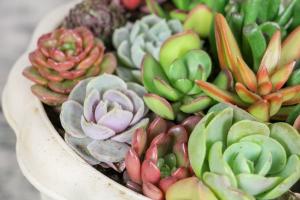How Many Water Plants are Too Many for a Pond?
If you have a pond, you probably love to decorate it with water plants. Not only do they add beauty to your backyard or garden, but they also help maintain the ecological balance of your pond. However, how many water plants are too many for a pond? In this article, we will discuss some important factors to consider when adding water plants to your pond.
The Size of Your Pond
The first and most important factor to consider is the size of your pond. The number of water plants you can have in your pond depends on the pond's size, as larger ponds can accommodate more plants without causing any problems. For instance, if you have a small pond, adding too many water plants can cause overcrowding and hinder the movement of fish, leading to oxygen depletion and algae growth. On the other hand, a large pond can easily accommodate a variety of water plants without affecting its ecological balance.
The Types of Water Plants
The types of water plants you choose to add to your pond also plays a role in determining the number of plants it can sustain. Different water plant species have different growth habits and nutrient requirements. For example, some plants like water lilies and lotuses can grow quite large and produce a lot of leaves, which can shade out other plants and deprive them of sunlight. On the contrary, some smaller plant species can be more prolific and cause overcrowding if not monitored frequently. It is important to choose plants that are suited for your pond's size and environment to maintain a healthy balance.
The Ecosystem of Your Pond
Your pond's ecosystem is a complex web of life, including fish, amphibians, and microorganisms. Adding too many plants can disrupt this balance and lead to poor water quality. Water plants require nutrients to grow, which are often present in the water due to fish waste and decomposing plant matter. However, if you add too many plants, they will consume more nutrients than what is available, leading to nutrient depletion and algal blooms. It is crucial to strike a balance between the number of plants and other aquatic life to maintain a healthy ecosystem.
The Maintenance Required
Adding water plants to your pond requires a certain amount of maintenance, including pruning and fertilizing. If you have too many plants, you will need to devote more time and effort to maintain them regularly. This can be especially challenging if you have a busy schedule or are new to pond management. To avoid overwhelming yourself, it is best to start with a smaller number of plants and gradually add more as you become more experienced.
The Final Verdict
In conclusion, the number of water plants you can add to your pond depends on many factors, including its size, the types of plants, the ecosystem, and the amount of maintenance required. As a general rule of thumb, it is best to limit the number of plants to one-third of the pond's surface area. This will ensure that your pond remains healthy, aesthetically pleasing, and easy to maintain.

 how many times do yo...
how many times do yo... how many planted tre...
how many planted tre... how many pine trees ...
how many pine trees ... how many pecan trees...
how many pecan trees... how many plants comp...
how many plants comp... how many plants can ...
how many plants can ... how many plants and ...
how many plants and ... how many pepper plan...
how many pepper plan...































